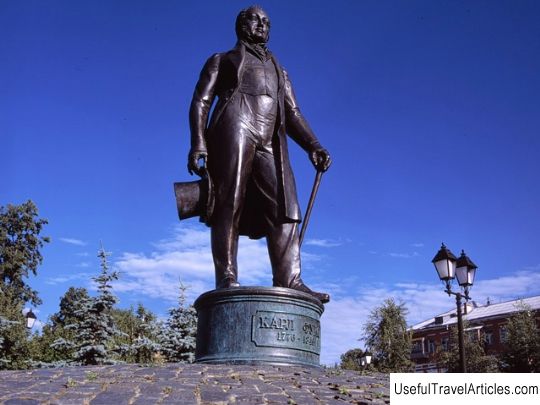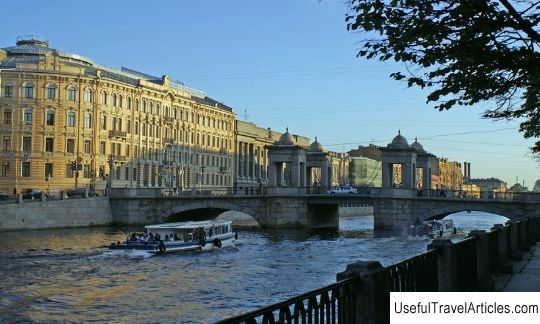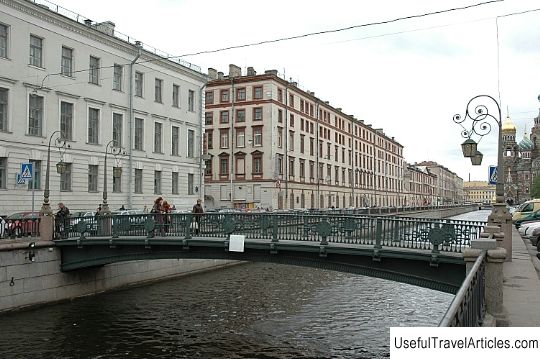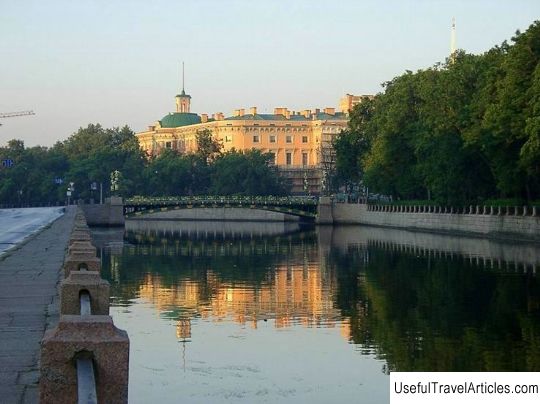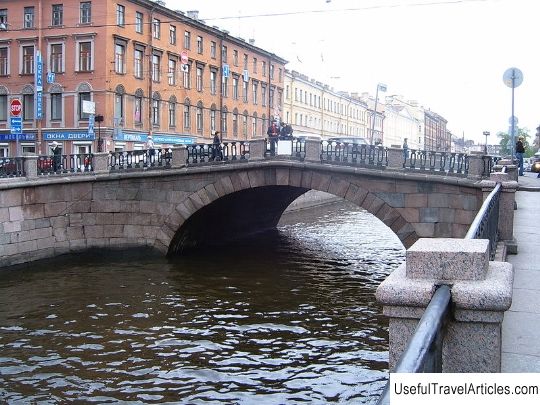Staro-Kalinkin bridge description and photos - Russia - Saint Petersburg: Saint Petersburg
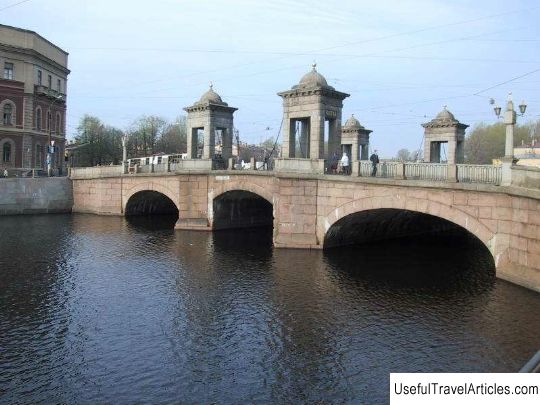
Staro-Kalinkin bridge description and photos - Russia - Saint Petersburg: Saint Petersburg. Detailed information about the attraction. Description, photos and a map showing the nearest significant objects. Photo and descriptionOne of the unique architectural monuments of St. Petersburg is the Staro-Kalinkin bridge, located in the Central district of the city and connecting the Bezymyanny and Kolomensky islands through the Fontanka. The nearest metro station is Narvskaya. It is located at the mouth of the river. On the left bank of the bridge is Staro-Peterhof Avenue. Nearby there is an exit to Tsiolkovskogo street through the embankment. On the right bank - Lotsmanskaya Street and Repin Square. From this side, the transport lines of Sadovaya Street go to the bridge. The history of the name of the bridge comes from the small Finnish village of Kaljula (according to other sources - Kallina). When the construction of the city on the Neva was just beginning, the name of the village was changed into Russian. They began to call her Kalinkina. At the beginning of the 18th century, two arms of the Fontanka converged here. A multi-span wooden bridge with a swing-out span was built across them. According to archival data, it already existed in 1733. In 1786-1788. the wooden bridge was rebuilt according to the project of engineers I.K. Gerard and P.K. Sukhtelena. According to some reports, it is known that the middle part of the bridge was drawbridge until the end of the 19th century. The exact date of the next restructuring is unknown. However, in the inventory list for 1880, the middle part of the bridge was depicted as a solid, braced system. For over 100 years, the Staro-Kalinkin bridge has not been rebuilt or reconstructed. All parts and original details of the bridge have been preserved. The artist K. Knappe, who lived at that time, depicted the Staro-Kalinkin Bridge on one of his canvases. This painting is now kept in the State Hermitage Museum. According to this work, the experts were able to find out the date of the construction of the bridge. In addition, it was discovered that the pedestrian part of the bridge was separated from the carriageway by granite barriers, granite obelisks with lanterns stood at the bridge entrances, and the openings were `` pressed against '' fences. granite benches. At the end of the 20th century, it became necessary to lay a tram line across the bridge. For these purposes, it was necessary to expand the crossing and increase the carrying capacity of the structure. The first project with improvements and modernization of the old bridge was proposed back in 1889 by the engineer-architect M.I. Ryllo. It was an innovative project, in which not only the structural engineering parts of the bridge were changed, but also the appearance - there were no towers. No decor elements were provided. The lighting also had to be replaced - it was supposed to put lanterns on metal poles. The pedestrian part changed - it was carried out on metal consoles, which simultaneously increased the dimensions of the bridge. This project could not be called a reconstruction. It was rather the construction of a new bridge in place of the old one. In October 1889, the project was approved by the City Council. However, the public did not support Ryllo's ideas. The architect was offered to make a new project. In the second project of MI Ryllo, the towers were left, but all the decorative elements were abolished. The width of the bridge was about 15 meters. In June 1890, this project was approved. During construction, which went on from 1892 to 1893. all decorative elements - obelisks, benches on shaped brackets, sidewalk fences were dismantled, which caused a wide public outcry. During the reconstruction of the bridge in 1907-1908. it was expanded again. Granite vaults were added at the top and bottom. In 1965, the Lenmostotrest team received an offer to restore the historical appearance of Staro-Kalinkin Bridge. The initiative was supported. The project was developed by the architect I.N. Benoit. The external appearance was adopted from the view of the crossing on the canvas of K. Knappe "Kalinkin Bridge". After the restoration, the bridge acquired the appearance most similar to the original Staro-Kalinkin Bridge. All decorative elements were completely restored, the overhead parts were restored, and granite barriers were installed along the roadway. There are granite benches on the parapets of the opening. Granite obelisks with lanterns reappeared. In 1969 g. the metal parts of the decor were gilded. 1986-87 designed by architect V.M. Ivanov, memorial plaques and lanterns on the towers were recreated.      We also recommend reading Market of San Miguel (Mercado de San Miguel) description and photos - Spain: Madrid Topic: Staro-Kalinkin bridge description and photos - Russia - Saint Petersburg: Saint Petersburg. |
